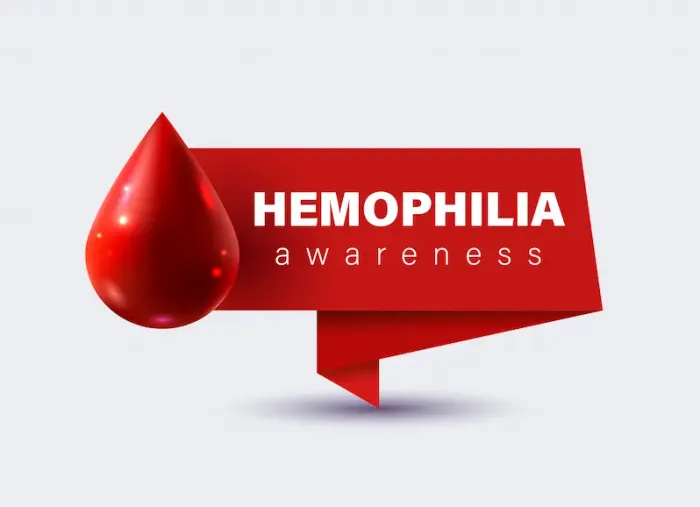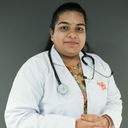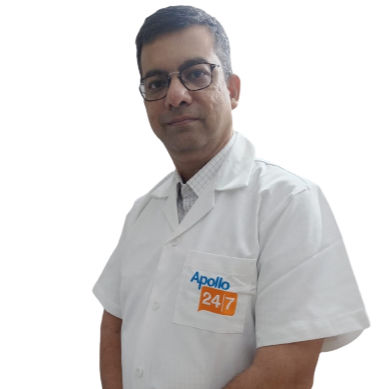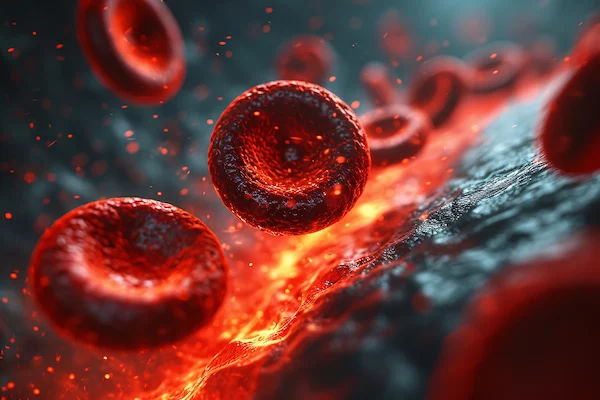Guide to Haemophilia Parents Caregivers Tips
A parent's guide to caring for a child with hemophilia. Learn essential tips for managing treatments, preventing bleeds, and ensuring your child lives a full, active life. Get expert advice and support.

Written by Dr. J T Hema Pratima
Reviewed by Dr. Shaik Abdul Kalam MD (Physician)
Last updated on 17th Sep, 2025

Introduction
Receiving a haemophilia diagnosis for your child can feel overwhelming. Suddenly, you're navigating a new world of medical terms, treatment schedules, and safety concerns. You are not just a parent anymore; you are a caregiver, advocate, nurse, and cheerleader all rolled into one. This guide is designed for you. We’ll move beyond the medical textbooks to offer practical, heartfelt advice for managing daily life with haemophilia. From baby-proofing your home to preparing your child for school and fostering their independence, we cover the essentials to empower you on this journey. Remember, while the path may have unique challenges, it is also filled with immense love, resilience, and hope. Let’s walk through this together, equipping you with the knowledge and confidence to provide the best care for your child.
Understanding Your Child's Haemophilia
What is Haemophilia? The Basics Explained
Haemophilia is a rare genetic bleeding disorder where the blood doesn’t clot properly due to a deficiency in specific clotting factors—proteins in the blood that control bleeding. Think of clotting like a puzzle; if a piece is missing, the picture can’t be completed. In Haemophilia A, factor VIII is missing. In Haemophilia B (Christmas disease), it’s factor IX. This means that a person with haemophilia will bleed for a longer time after an injury than someone without it. It’s crucial to understand that they don’t bleed faster, just longer, and internal bleeding into joints and muscles is a particular concern.
The Genetics: How Haemophilia is Inherited
The gene that causes haemophilia is carried on the X chromosome. This is why it predominantly affects males. Females have two X chromosomes; if one has the faulty gene, the other is usually sufficient to produce enough clotting factor, making them carriers. They can pass the gene to their children. Males have one X and one Y chromosome; if their X chromosome has the faulty gene, they will have haemophilia. A key point for parents: in about one-third of cases, there is no family history, and the condition occurs due to a spontaneous genetic mutation.Consult Top Specialists
Severity Levels: Mild, Moderate, and Severe
The severity is determined by the level of functioning clotting factor in the blood:
• Severe (<1% factor level): Bleeding can occur spontaneously without any obvious injury, often into joints and muscles.
• Moderate (1-5% factor level): Bleeding typically occurs with minor injuries or surgery. Spontaneous bleeds are rare.
• Mild (5-40% factor level): Bleeding usually only happens after significant injury, surgery, or tooth extraction. It may not be diagnosed until later in life.
Building Your Healthcare Dream Team
The Role of a Haemophilia Treatment Centre (HTC)
Your most important partner in care will be a comprehensive Haemophilia Treatment Centre (HTC). These are specialized centers that provide a multidisciplinary approach to care. Studies show that people who receive care at HTCs have significantly better health outcomes and lower treatment costs. They don’t just treat bleeds; they focus on holistic, lifelong health.
Key Specialists: Hematologists, Nurses, and Physical Therapists
Your core team includes:
• Hematologist: A doctor specializing in blood disorders who oversees the treatment plan.
• Nurse Coordinator: Your go-to for day-to-day questions, infusion training, and support.
• Physical Therapist: Essential for assessing joint health, designing safe exercise programs, and rehabilitating after a bleed.
• Social Worker/Psychologist: Provides emotional support and helps navigate insurance and school plans.
If your child experiences frequent joint bleeds or you need a specialist opinion, consulting a hematologist online with Apollo24|7 can be a convenient first step to discuss concerns and management strategies.
Recognizing and Responding to a Bleed
Signs of Bleeding: What to Look For (Visible and Hidden)
Early recognition is critical. Signs include:
• Joint Bleed: Tingling, warmth, ache, stiffness, swelling, and reluctance to use the limb (e.g., a toddler refusing to walk).
• Muscle Bleed: Pain, swelling, warmth, and bruising.
• Other: Unexplained irritability in infants, bloody or black stools, severe headache, neck pain, repeated vomiting (signs of a head injury).
The R.I.C.E. Method: First Line of Defence
For any minor bleed, remember R.I.C.E. while you prepare to administer factor:
• Rest: Immobilize the affected joint or muscle.
• Ice: Apply a cold pack to reduce swelling and pain.
• Compression: Use a bandage for light compression.
• Elevation: Raise the limb above the level of the heart.
When to Use Factor & When to Go to the ER
Administer prescribed factor concentrate immediately for any suspected significant bleed. Go to the Emergency Room immediately for:
• Any head, neck, eye, or groin injury.
• Difficulty breathing or chest pain.
• Major trauma or loss of consciousness.
• If the bleeding doesn't stop after treatment.
The Emotional Wellbeing of Child and Caregiver
Addressing Anxiety and Fear in Your Child
Children pick up on parental anxiety. Use age-appropriate language to explain haemophilia. Empower them by teaching them to recognize their own bleeds. Encourage them to express their feelings and normalize their experiences. The goal isn’t to create a bubble of fear, but to build a toolkit of confidence.
Caregiver Burnout: Recognizing and Preventing It
The constant vigilance is exhausting. Caregiver burnout is real and includes feelings of exhaustion, anger, resentment, and social isolation. Prevent it by:
• Accepting Help: Let others cook a meal or watch your child for an hour.
• Taking Breaks: Schedule time for yourself, even if it's just 15 minutes to read.
• Connecting: Talk to other parents in the haemophilia community who truly understand. Their shared experiences are invaluable.
Conclusion: You Are Not Alone
The journey of raising a child with haemophilia is one of profound love and resilience. While it comes with unique responsibilities, it does not define your child or your family. With today’s advanced treatments and comprehensive care, children with haemophilia can lead active, fulfilling lives—playing sports, pursuing careers, and achieving their dreams. Your role as their parent and caregiver is the cornerstone of their success. By educating yourself, building a strong support network, and advocating for their needs, you are giving them the strongest possible foundation. Remember, it’s okay to have difficult days. Reach out, ask for help, and lean on the community that surrounds you. You are not alone in this. For ongoing management and specialist consultations, remember that platforms like Apollo24|7 can provide accessible support, connecting you with hematologists who can guide you through this journey.
Consult Top Specialists
We'd Love to Hear From You!
Was this guide helpful? What was the most valuable tip you found? Share your own experiences and advice in the comments below to help other parents in our community. Don't forget to share this article with friends, family, or teachers who want to learn more about supporting a child with haemophilia.
Consult Top Specialists

Dr. Shesham Srinidhi
General Practitioner
5 Years • MD(physician)
Hyderabad
Apollo 24|7 Clinic, Hyderabad
(150+ Patients)

Dr. Siri Nallapu
General Practitioner
5 Years • MBBS
Hyderabad
Apollo 24|7 Clinic, Hyderabad

Dr. Chethan T L
General Physician/ Internal Medicine Specialist
5 Years • MBBS, MD, DNB (General Medicine)
Bengaluru
Apollo Medical Center, Marathahalli, Bengaluru

Dr. Rajib Ghose
General Physician/ Internal Medicine Specialist
25 Years • MBBS
East Midnapore
VIVEKANANDA SEBA SADAN, East Midnapore

Dr D M Karthik
General Practitioner
4 Years • MBBS, Fellowship in Diabetes Mellitus, Advance certificate in Diabetes Mellitus, Derma Nutrition Certification
Visakhapatnam
Apollo 24|7 Clinic - Andhra Pradesh, Visakhapatnam
Consult Top Specialists

Dr. Shesham Srinidhi
General Practitioner
5 Years • MD(physician)
Hyderabad
Apollo 24|7 Clinic, Hyderabad
(150+ Patients)

Dr. Siri Nallapu
General Practitioner
5 Years • MBBS
Hyderabad
Apollo 24|7 Clinic, Hyderabad

Dr. Chethan T L
General Physician/ Internal Medicine Specialist
5 Years • MBBS, MD, DNB (General Medicine)
Bengaluru
Apollo Medical Center, Marathahalli, Bengaluru

Dr. Rajib Ghose
General Physician/ Internal Medicine Specialist
25 Years • MBBS
East Midnapore
VIVEKANANDA SEBA SADAN, East Midnapore

Dr D M Karthik
General Practitioner
4 Years • MBBS, Fellowship in Diabetes Mellitus, Advance certificate in Diabetes Mellitus, Derma Nutrition Certification
Visakhapatnam
Apollo 24|7 Clinic - Andhra Pradesh, Visakhapatnam
More articles from Haemophilia
Frequently Asked Questions
1. What are the first signs of haemophilia in a toddler?
Common early signs include large, unexplained bruises (especially on the torso, back, or head), prolonged bleeding from minor cuts or mouth injuries, and swelling or discomfort in joints, which may manifest as irritability or reluctance to crawl or walk.
2. Can my child with haemophilia ever play sports?
Absolutely! Physical activity is crucial for strengthening muscles and protecting joints. The key is choosing safe, non-contact sports. Excellent choices include swimming, biking (with a helmet), tennis, badminton, and walking. Always consult your haemophilia team before starting a new sport.
3. What should I include in a haemophilia emergency kit?
Your kit should contain: your factor concentrate, supplies for infusion (syringes, needles, alcohol wipes, tourniquet), a detailed instruction letter from your hematologist, ice packs, bandages, and contact information for your HTC and local hospital.
4. How do I explain haemophilia to my child’s school?
Schedule a meeting with the teacher, school nurse, and principal. Provide a simple, written 'Haemophilia School Care Plan' that outlines what haemophilia is, signs of a bleed, emergency contacts, and steps to take in case of injury. Emphasize that they should always call you first for any head injury.
5. Are there any new treatments for haemophilia beyond factor replacement?
Yes, the treatment landscape is evolving rapidly. Newer therapies include non-factor replacement products (like emicizumab) that mimic the function of factor VIII and require less frequent dosing, and gene therapy, which aims to provide a long-term cure by enabling the body to produce its own clotting factor. Discuss these options with your hematologist.

.webp)